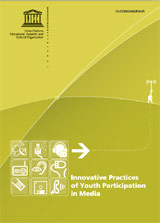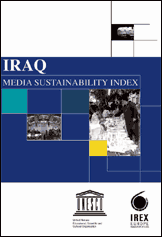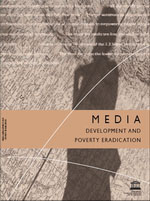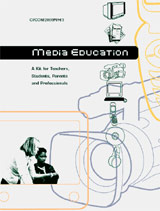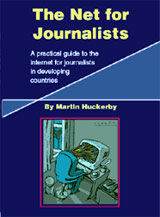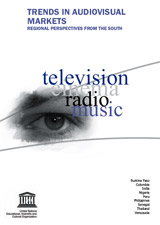Prof. Jamal Eddine Naji, a well-known expert in communication and media, wrote this book to describe the context of certain French-speaking countries in Africa and the Maghreb and to recommend them good practices taking into account their identities and particularities.
Publication year: 2006
Amidst the fast-changing broadcast media landscape, the present book examines many “balancing acts” which stake-holders both in government and private sector have to undertake to establish and maintain an effective and credible broadcast regulation mechanism.
Publication year: 2006
The present publication offers the user information about States’ ratifications of, accession to and succession to major human rights treaties, both universal and regional. Published annually, it shows the development of the ratification process of these normative instruments. As comments to previous editions have confirmed, this publication has proven to be useful for decision-makers, media professionals, researchers, activists and all those who are committed to human rights.
Publication year: 2006
The vision of the Information for All Programme (IFAP) is of a world where everyone has access to information that is relevant to them and where everyone has the opportunity and skills to use this information in creating better societies.
Publication year: 2006
130-page full colour publication on activities during 2004-05, including information about IFAP funded projects. The report is now available in English, French and Russian.
Publication year: 2006
The study offers an interesting range of examples from Ghana, Haiti, India, Kyrgyzstan, Mexico, Mozambique, Nigeria, Somalia, South Africa, Vietnam, and Zambia that best exemplify innovative approaches and strategies adopted by youth in using the media for social and personal development. It will be useful as a research and reference guide to community-based media centres, media education practitioners, non governmental organizations, policy-makers, planners, media professionals, social activists, researchers, etc.
Publication year: 2006
The Media Sustainability Index (MSI) represents the contributions of more than 50 Iraqi journalists, editors, media managers, and civil society activists. The MSI is a resource for journalists, media managers, free-press advocates, policymakers, development professionals, and donors seeking to strengthen the media.
Publication year: 2006
Since its inception, UNESCO has been defending the right to “seek, receive and impart” information. To celebrate World Press Freedom Day 2005, held in Dakar, Senegal, UNESCO chose “Media and Good Governance” as the key theme, eliciting the wide range of views that have been adapted to form this book.
Publication year: 2006
The articles in this book have been adapted from contributions to the UNESCO-sponsored conference in Colombo, Sri Lanka marking World Press Freedom Day on May 3, 2006.
Publication year: 2006
This Training Kit provides a complex and comprehensive view of media education, encompassing all media, old and new. It seeks new ways in which people can enhance their participation in the political and cultural life of the general community through the media. In particular, it promotes young people’s access to the media, while also increasing their critical appreciation of its activities. It has a sustainable development perspective and addresses some of the challenges of knowledge societies, especially the digital knowledge divide.
Publication year: 2006
Drawing on its unique experience in developing a successful Media Sustainability Index (MSI) for Europe and Eurasia over the past five years, IREX is now expanding its in-depth analysis of the conditions for independent media to the Middle East and North Africa (MENA) region.
Publication year: 2006
This handbook has been written to provide guidelines for developing process of awareness-raising. Theories, principles and techniques are offered in this manual based on the experiences of those who have developed practices that were successful and that met certain expectations. Rather than presenting generalizations, the handbook focuses on one event, the United Nations Literacy Decade 2003-2012.
Publication year: 2006
In 2005 UNESCO asked the International Clearinghouse on Children, Youth and Media to prepare a publication on “Efforts and Innovative Approaches to Reduce Violence in Electronic and Digital Media”. The present volume presents the results of the work the Clearinghouse has done in response to that request.
Publication year: 2006
The purpose of this document, prepared by the Memory of the World Programme's Sub-Committee on Technology, is to provide detailed guidance on managing the risks associated with storing archival data on recordable CD and DVD. It recommends a strategy to reduce these risks through error measurement and appropriate management.
Publication year: 2006
This training handbook is a resource (with a printed manual and a CD) designed for both print and broadcast journalists and journalism students in developing countries around the globe. The accompanying CD contains some software, other extra resources and lesson plans for trainers.
Publication year: 2006
The research, conducted in 2004-2005 under a UNESCOP project and presented in this book, provides an overview of the main trends in the broadcasting and audiovisual industry worldwide, with a focus on regional patterns of production, consumption and trade in Africa, Asia and Latin America.
Publication year: 2006









